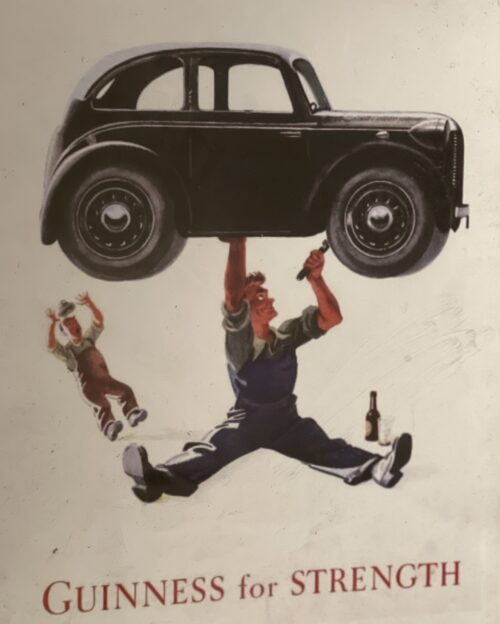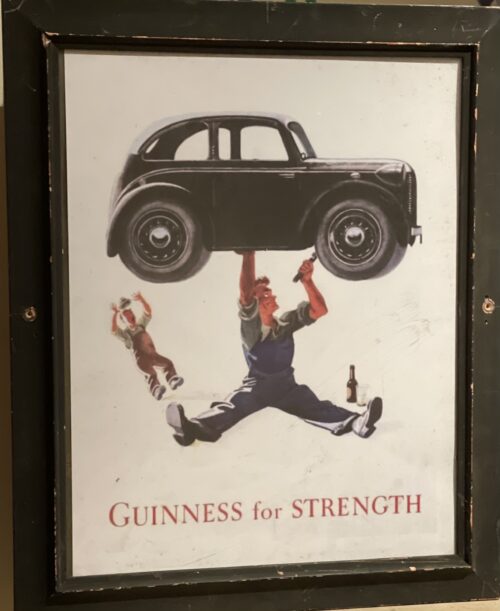





The Munster hurling final day is one of the great occasions in Irish sport.Be it Semple Stadium, the Gaelic Grounds or in Páirc Uí Chaoimh, it is a huge date on the provincial and national stage.It is a well-documented fact that on Munster final day, carloads of supporters would travel from the Glens of Antrim to Thurles to view the protagonists in action.
It’s 30 years ago now but it was a similar situation in 1990 when the two old foes collided on a scalding July day in Thurles .Tipperary had the MacCarthy Cup in their possession back then too having beaten Antrim in the All-Ireland final the previous September.Cork, on the other hand, were down in the dumps having lost to what proved to be a very poor Waterford team in 1989, a Waterford team that were subsequently hammered by Tipp in the Munster final.Cork went into the Munster final in 1990 as raging underdogs, almost no-hopers against the reigning All-Ireland champions.But it was a different Cork team that they were facing this time. In attitude as much as anything, as Teddy McCarthy and Tomás Mulcahy were both out for the provincial decider through injury.

The Canon and Gerald brought a fresh and renewed impetus to the Cork set up, brought back a few players who had been discarded and going up to Thurles there was a calm and cautiously optimistic approach.
For Cork to be in the hunt they needed a positive start to have any chance of outright victory, they needed to unsettle Tipp early on and that is exactly what transpired.
Cork started brilliantly, inspired by Jim Cashman who was a dominant figure at centre-back, while Tony O’Sullivan, later Hurler of the Year, was hugely influential at wing-forward, as the below clip from the @corkhurlers1 twitter shows.A Tipperary laden with great players like Nicky English, Pat Fox, the Bonner brothers, Declan Ryan, John Leahy and Bobby Ryan quickly realised that this was a different Cork team than the one who had went down so meekly to Waterford a year earlier.
The Cork crowd really got behind the team and as the game progressed an unlikely hero was to emerge from a small club in West Cork.
Argedeen Rangers’ Mark Foley had one of those magical days that you could only ever dream about. Everything ‘The Dentist’ touched turned to gold, there was no holding him.

Tipp couldn’t cope and the rest is history as Cork swept to one of their greatest Munster Final triumphs.
One can recall sitting in the Ryan Stand that day with Cork Examiner sports editor Tom Aherne and both of us losing the run of ourselves surrounded by Tipp supporters who were in a state of shock. Foley’s performance that day has stood the test of time as one of the greatest individual displays ever given in a Munster Final or otherwise.
But there were heroes everywhere, from Ger Cunningham out. Teddy McCarthy, John Fitzgibbon, Tomás Mulcahy, Kevin Hennessy, Denis Walsh, Ger Fitzgerald, Tony O’Sullivan to mention just a handful.
Jim Cashman had the game of his life at number six completely stifling Declan Ryan. But it was Foley’s day.
That performance would be nearly impossible to repeat but in the All Ireland final against Galway he scored 1-1 which was a major contribution as Cork regained the McCarthy Cup.
Tipp exacted revenge a year later in a Munster final replay when Jim Cashman was controversially taken out of the game.
The Cork Tipp rivalry was as intense as it ever was back then and Cork won back the Munster final in 1992.
The Cork team that day in 1990 was: G Cunningham; J Considine, D Walsh, S O’Gorman; S McCarthy, J Cashman, K McGuckin; P Buckley, B O’Sullivan; D Quirke, M Foley, T O’Sullivan; G Fitzgerald, K Hennessy, J Fitzgibbon
Scorers: Mark Foley 2-7, John Fitzgibbon 2-0, Tony O’Sullivan 0-5, Cathal Casey, Ger Fitzgerald, Kevin Hennessy, David Quirke 0-1 each.

In the All-Ireland final a short few months later Cork defeated Galway in a seven-goal thriller in Croke Park, winning in a scoreline of 5-15 to 2-21.
The Cork scorers that day were: John Fitzgibbon 2-1, Kevin Hennessy 1-4, Tomás Mulcahy 1-2, Mark Foley 1-1, Teddy McCarthy 0-3, Tony O’Sullivan 0-2, Ger Fitzgerald, Kieran McGuckin 0-1 each.



 Toners won “Snug of the Year” 2010, a competition hosted by Powers Whiskey. 110 pubs across Ireland were shortlisted, and after counting the public’s votes Toners was announced the winner. A snug is a private area separated within a pub and is a timeless feature in a traditional Irish pub. Like the one in Toners, it typically has its own door, a rugged bench and is completely private. Back in the day it was where the likes of policemen, lovers and the Irish literati met up.
Toners won “Snug of the Year” 2010, a competition hosted by Powers Whiskey. 110 pubs across Ireland were shortlisted, and after counting the public’s votes Toners was announced the winner. A snug is a private area separated within a pub and is a timeless feature in a traditional Irish pub. Like the one in Toners, it typically has its own door, a rugged bench and is completely private. Back in the day it was where the likes of policemen, lovers and the Irish literati met up.
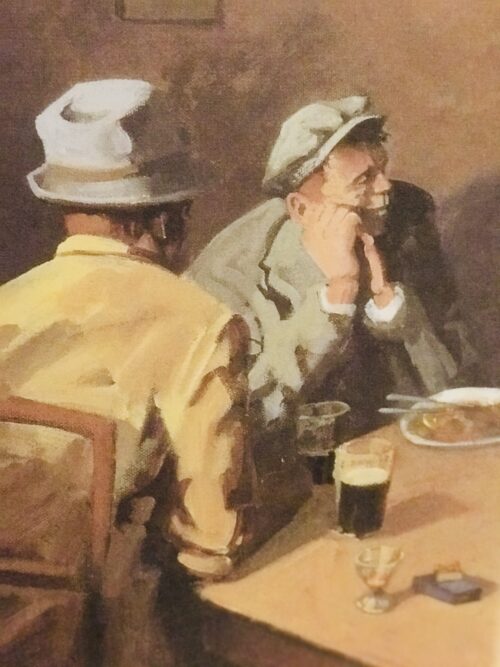
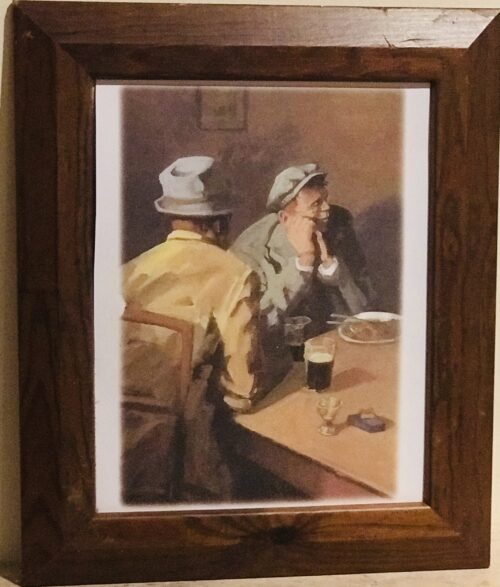
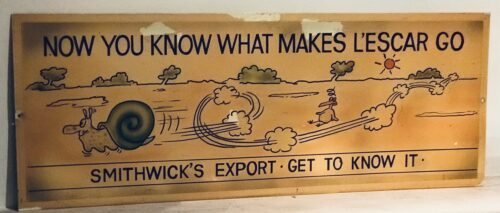

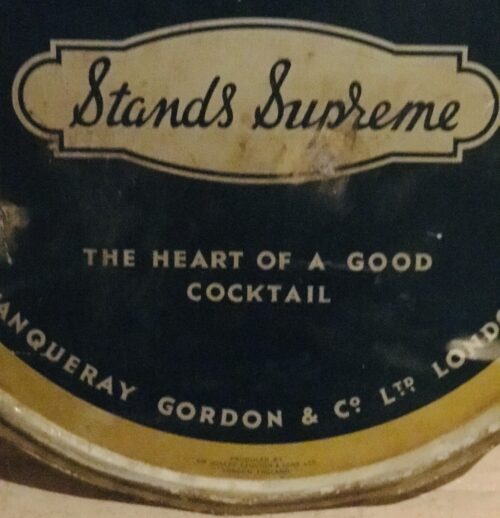
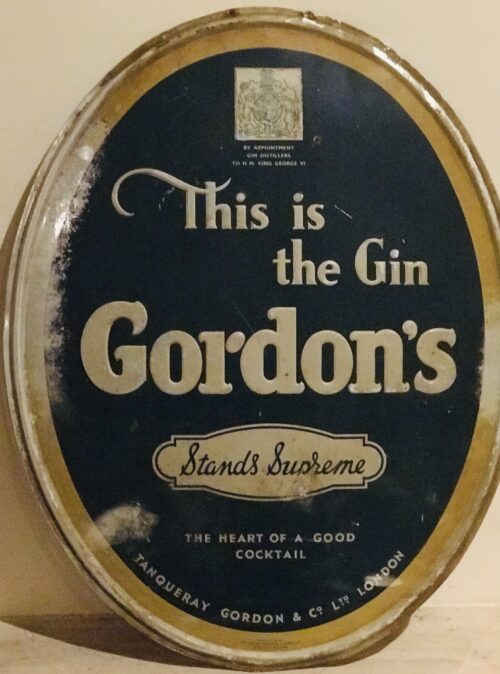

n 1863, Joseph Causton and his son, also named Joseph, developed the printing company which was to become the large and well known Joseph Causton & Sons Limited.
In 1867 the company was described as being a wholesale stationer and printer with a large warehouse at Southwark Street, London.
Joseph Causton was also a politician. He became a Councillor for Billingsgate, East London in 1868 and later Sheriff for London and Middlesex. The pinnacle of his career came when Queen Victoria opened Blackfriars Bridge and Holburn Viaduct in 1869 and he was knighted at Windsor Castle to mark the event. The company name now became Sir Joseph Causton & Sons Limited. Sir Joseph died just two years later but his sons, Joseph, Richard and James continued as partners of the firm.
The company moved to a large new printing works in Eastleigh, Hampshire in the 1930s. The printing works made labels for household brands including Marmite and Guiness. During The Second World War they printed secret maps for the government in a specially bricked off part of the building.
By the end of the 1960s Sir Joseph Causton & Sons Limited fortunes were in decline. In the mid 1970s the company was losing money but it was not until 1984 that the firm was taken over by Norton Opex. They in turn were acquired by Bowater and Sir Joseph Causton and Sons ceased trading.
The Causton name has survived only as Causton Envelopes Limited and Causton Cartons, which is a subsidiary of the Bowater Group, manufacturing cartons for the pharmaceutical industry.


|
|


"The An Post-GAA Team of the Millennium was unveiled at Croke Park yesterday. The selection which serves as the first 15 inductions into the GAA's new Hall of Fame has also been marked by an issue of 15 commemorative stamps by An Post. The stamps will be available in a variety of combinations from today. Next year, a similar exercise will take place to honour 15 hurlers.
There was some comment on the absence of Dublin's Brian Mullins and Jack O'Shea from Kerry but it seemed generally appreciated that there were only two centrefield slots on the team and someone had to lose out. Tommy Murphy, the Boy Wonder of the 1930s Laois team which won three Leinster titles in a row, who was included ahead of Mullins and O'Shea had the added distinction of being the only player honoured who had not won an All-Ireland medal.
Not surprisingly, Kerry - who top the All-Ireland roll of honour with 31 titles - lead the way on the team with six selections. Despite being clearly second behind Kerry with 22 All-Irelands, Dublin provide only one player, Kevin Heffernan at left corner forward. Galway and Mayo have two players each with one from Cavan, Down, Meath and Laois making up the balance.
Joe McDonagh, President of the GAA, described the project as a reflection "on the history and evolution of our association, its games and its central characters, the players who have left such giant footprints in the sands that is the chronicle of the GAA".
The Hall of Fame which is inaugurated by this team will be represented all through Croke Park, according the GAA director general Liam Mulvihill. He said that the Hall will be added to with a small number of inductions on an annual basis.
"We decided that this team would be the initial members of the Hall of Fame and we were planning to honour those selected around the main areas of the concourse of the re-developed stadium, in the bottom tier and the upper tier. We wanted those ordinary tiers where ordinary supporters gather as the most appropriate place to honour those players.
"The inductions will be in very small numbers, we're probably talking about two a year. Two footballers, two hurlers or one footballer and one hurler. It has to be made very, very special."
Paddy Downey, formerly GAA correspondent of The Irish Times, was one of the adjudicators and confirmed the widespread feeling that the task of selecting such a team wasn't an enviable one.
"It's nearly impossible because there's so many players, particularly in what you might call the big, central positions: midfield, centre-back, full back. Already people are saying to me: `why isn't Brian Mullins on, why isn't Paddy Kennedy of Kerry, Jack O'Shea - above all at the present time' and so on.
"We also had the problem of not picking a half-century team of people we had seen ourselves. You could also argue how could we pick someone we hadn't seen - Dick Fitzgerald, apparently one of the greatest players of all time, Paul Russell of Kerry, Jack Higgins of Kildare, from the earlier part of the century.
"I was conscious that we could have gone further back and taken the word of our predecessors in journalism who had praised these players and done so in print. Inevitably it came to be more a team of the second half of the century than the early years."
Martin O'Connell of Meath was the only player of what might roughly be called contemporary times - one whose career was largely after the selection of the 1984 Centenary Team - to earn a place.
"I was surprised," he said. "I didn't even know until I came up here. I arrived a bit late and Micheal O Muircheartaigh was just reading out the names. I was absolutely delighted."


An Address from the People of Kilbeggan to John Locke, Esq. Dear Sir - Permit us, your fellow townsmen, to assure of our deep and cordial sympathy in your loss and disappointment from the accident which occurred recently in your Distillery. Sincerely as we regret the accident, happily unattended with loss of life, we cannot but rejoice at the long-wished-for opportunity it affords us of testifying to you the high appreciation in which we hold you for your public and private worth. We are well aware that the restrictions imposed by recent legislation on that particular branch of Irish industry, with which you have been so long identified, have been attended with disastrous results to the trade, as is manifest in the long list of Distilleries now almost in ruins, and which were a few years ago centres of busy industry, affording remunerative employment to thousands of hands; and we are convinced the Kilbeggan Distillery would have long since swelled the dismal catalogue had it fallen into less energetic and enterprising hands. In such an event we would be compelled to witness the disheartening scene of a large number of our working population without employment during that period of the year when employment Is scarcest, and at the same time most essential to the poor. Independent then of what we owe you, on purely personal grounds, we feel we owe you a deep debt of gratitude for maintaining in our midst a manufacture which affords such extensive employment to our poor, and exercises so favourable an influence on the prosperity of the town. In conclusion, dear Sir, we beg your acceptance of a new steam boiler to replace the injured one, as testimony, inadequate though it is, of our unfeigned respect and esteems for you ; and we beg to present it with the ardent wish and earnest hope that, for many long years to come, it may contribute to enhance still more the deservedly high and increasing reputation of the Kilbeggan Distillery.In a public response to mark the gift, also published in several newspapers, Locke thanked the people of Kilbeggan for their generosity, stating "...I feel this to be the proudest day of my life...". A plaque commemorating the event hangs in the distillery's restaurant today. In 1878, a fire broke out in the "can dip" (sampling) room of the distillery, and spread rapidly. Although, the fire was extinguished within an hour, it destroying a considerable portion of the front of the distillery and caused £400 worth of damage. Hundreds of gallons of new whiskey were also consumed in the blaze - however, the distillery is said to have been saved from further physical and financial ruin through the quick reaction of townsfolk who broke down the doors of the warehouses, and helped roll thousands of casks of ageing spirit down the street to safety. In 1887, the distillery was visited by Alfred Barnard, a British writer, as research for his book, "the Whiskey Distilleries of the United Kingdom". By then, the much enlarged distillery was being managed by John's sons, John Edward and James Harvey, who told Barnard that the distillery's output had more than doubled during the preceding ten years, and that they intended to install electric lighting.Barnard noted that the distillery, which he referred to as the "Brusna Distillery", named for the nearby river, was said to be the oldest in Ireland. According to Barnard, the distillery covered 5 acres, and employed a staff of about 70 men, with the aged and sick pensioned-off or assisted. At the time of his visit, the distillery was producing 157,200 proof gallons per annum, though it had the capacity to produce 200,000. The whiskey, which was sold primarily in Dublin, England, and "the Colonies", was "old pot still", produced using four pot stills (two wash stills: 10,320 / 8,436 gallons; and two spirit stills: 6,170 / 6,080 gallons), which had been installed by Millar and Company, Dublin. Barnard remarked that at the time of his visit over 2,000 casks of spirit were ageing in the distillery's bonded warehouses. In 1893, the distillery ceased to be privately held, and was converted a limited stock company, trading as John Locke & Co., Ltd., with nominal capital of £40,000.
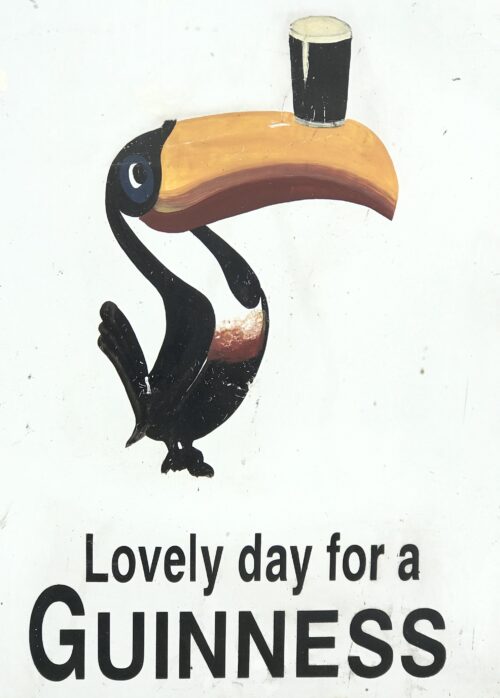
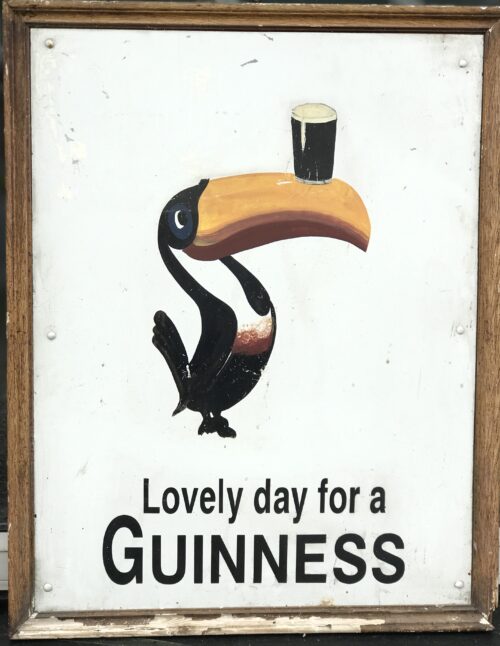

John Gilroy, illustrator of some of Guinness’s most well-known advertisements.

With John Gilroy’s illustrations and Dorothy Sayers’s copy, the Guinness toucan ads were an immediate hit. (Guinness)

Guinness coasters featuring the menagerie of John Gilroy’s advertisements. (Guinness)


 The All Blacks hit back with a try from Stephen ‘Beaver’ Donald but right on half time, Munster took a six point lead after this Barry Murphy try. This was one of those classic moments during an upset when you turn to a mate, nod vigorously and say ‘It’s on now'
The All Blacks hit back with a try from Stephen ‘Beaver’ Donald but right on half time, Munster took a six point lead after this Barry Murphy try. This was one of those classic moments during an upset when you turn to a mate, nod vigorously and say ‘It’s on now'
 Half time came a moment later and with it, this nice gesture from Cory Jane. For most Irish fans, this was the first time they had seen Jane in action and this moment, coupled with his strong attacking performance marked him as one of the good guys.
Half time came a moment later and with it, this nice gesture from Cory Jane. For most Irish fans, this was the first time they had seen Jane in action and this moment, coupled with his strong attacking performance marked him as one of the good guys.
 I can’t speak for anyone else, but the only thing I remember about the second half is Joe Rokocoko’s try – probably because Munster didn’t score in the second 40. Munster held out for 76 minutes until Rokocoko got the ball directly against his old teammate Doug Howlett.
Should Howlett have made the tackle? It is hard to stop Smokin’ Joe when he plants that foot.
I can’t speak for anyone else, but the only thing I remember about the second half is Joe Rokocoko’s try – probably because Munster didn’t score in the second 40. Munster held out for 76 minutes until Rokocoko got the ball directly against his old teammate Doug Howlett.
Should Howlett have made the tackle? It is hard to stop Smokin’ Joe when he plants that foot.
 And that was it. There was no heroic win. Unknown players like prop Timmy Ryan didn’t get to join the heroes of ’78 as regulars on the after-dinner speech circuit.
What made this such a memorable occasion was how unexpected it was. It was played on a Tuesday, sandwiched between two other November Tests and although the pageantry was always going to be good fun, the fact that it exploded into life in the way it did makes it one of the most exciting games in the history of Irish rugby.
It’s been six years now, but the memory of ‘It’s on’ is one that will never go away.
Munster: Howlett; B Murphy, Tipoki, Mafi, Dowling; Warwick, Stringer; Pucciariello, Sheahan, Ryan; M O’Driscoll (capt), Ryan; Coughlan, Ronan, Leamy.
Replacements: Buckley for Ryan 40, Fogarty for Sheahan 63, Holland for Leamy 24, Manning for Tipoki 52.
Not used: Melbourne, O’Sullivan, Prendergast
New Zealand: Jane; H Gear, Tuitavake, Toeava, Rokocoko; Donald, Weepu (capt); Mackintosh, Flynn, Franks, Filipo, Eaton, Thomson, Waldrom, Messam.
Replacements: Elliott for Flynn 65, Afoa for Franks 70, B Thorn for Filipo 71, Read for Thomson 60, Mathewson for Weepu 63, Muliaina for Tuitavake 71.
Not used: Kahui,
And that was it. There was no heroic win. Unknown players like prop Timmy Ryan didn’t get to join the heroes of ’78 as regulars on the after-dinner speech circuit.
What made this such a memorable occasion was how unexpected it was. It was played on a Tuesday, sandwiched between two other November Tests and although the pageantry was always going to be good fun, the fact that it exploded into life in the way it did makes it one of the most exciting games in the history of Irish rugby.
It’s been six years now, but the memory of ‘It’s on’ is one that will never go away.
Munster: Howlett; B Murphy, Tipoki, Mafi, Dowling; Warwick, Stringer; Pucciariello, Sheahan, Ryan; M O’Driscoll (capt), Ryan; Coughlan, Ronan, Leamy.
Replacements: Buckley for Ryan 40, Fogarty for Sheahan 63, Holland for Leamy 24, Manning for Tipoki 52.
Not used: Melbourne, O’Sullivan, Prendergast
New Zealand: Jane; H Gear, Tuitavake, Toeava, Rokocoko; Donald, Weepu (capt); Mackintosh, Flynn, Franks, Filipo, Eaton, Thomson, Waldrom, Messam.
Replacements: Elliott for Flynn 65, Afoa for Franks 70, B Thorn for Filipo 71, Read for Thomson 60, Mathewson for Weepu 63, Muliaina for Tuitavake 71.
Not used: Kahui, 